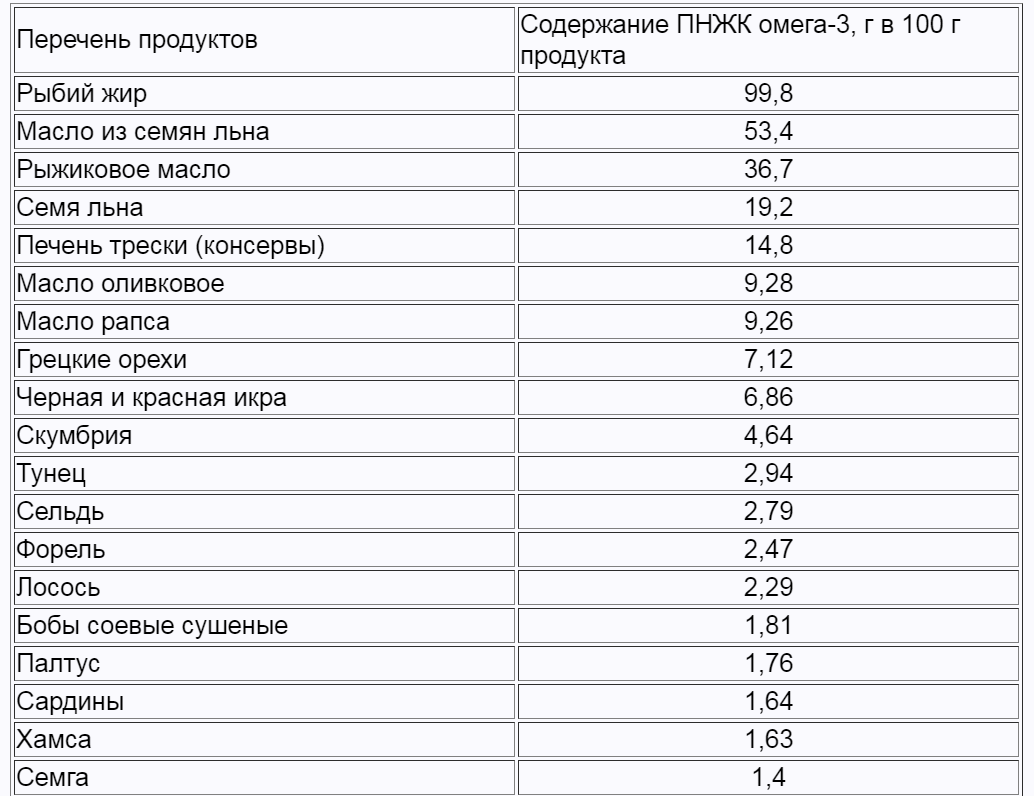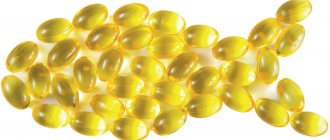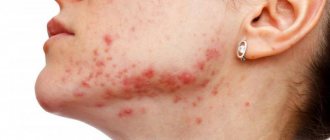What is Omega-3
There is a misconception that if you consume less fat, your figure will be normal and your blood vessels will be cleaner. This is not entirely true! There are different types of fats, and they are needed for:
- Protecting cell membranes from damage
- maintaining cell elasticity;
- participation in heat exchange processes;
- participate in the synthesis of sex hormones;
- promote the absorption of fat-soluble vitamins A, D, K;
- maintaining the body's energy reserves
Our brain is 60% adipose tissue and requires lipids to function properly.
Therefore, eating low-fat foods can play a cruel joke. Daily fat intake per day should be at least 30% of the total diet. All fatty acids that come to us are divided into saturated and unsaturated.
- Saturated fats are fats found in animal and poultry meat, as well as in milk and eggs;
- Unsaturated fats are fats found in plants, fish and vegetable oils.
Omega-3 polyunsaturated fatty acids, consisting of alpha-linolenic acid (ALA), eicosapentaenoic acid (EPA) and docosahexaenoic acid (DHA), are of greatest value to the body. They are the most valuable for our body and influence its development from the very moment of conception, being responsible for the formation of the embryo’s brain and visual organs. Omega-3 is considered essential, that is, not produced by our body. And it comes only from the outside with food. But our diet is most often far from ideal, especially for those who adhere to dietary restrictions. Then Omega-3 should come in the form of dietary supplements.
Indications for Omega-3
Omega-3 is recommended for people with diseases or disorders of the cardiovascular system. Omega-3 preparations are used to restore vascular elasticity and reduce cholesterol plaques. Used to maintain proper functioning of the internal secretion and digestive organs. Omega 3 is often prescribed to patients with diabetes to normalize metabolism in the body and normalize fat metabolism.
The drug has a positive effect during stress and nervous periods, and has a positive effect on the mental and emotional tone of the body. In addition, omega-6 supplements act as:
- a general tonic for the immune system, especially during acute periods of colds and flu,
- thinning and antiplatelet agent;
- means for restoring fat metabolism;
- antioxidant;
- cell membrane stabilizing substance;
- anti-inflammatory agent;
- immunostimulating;
- blood pressure regulating agent
- improving the process of cholesterol metabolism;
- normalization of blood flow, including in the structures of the brain;
Signs of omega-3 deficiency in the body
It happens that the body always reports a lack of nutrients in the body. The problem is that we do not always pay attention to its sounds and can recognize a malfunction in the body, attributing it to external circumstances. Meanwhile, a lack of omega-3 is observed in cases where:
- there is a violation of the neuropsychological background;
- decreased immunity;
- weight gain and difficulty losing it
- low levels of vitamins A and D
- diseases of the visual organs and the development of dry eye syndrome
- development of allergic reactions;
- memory problems, sleep disorders, irritability;
- pathological dry skin;
- protracted and indolent diseases
- hypertension, circulatory system disorders
Omega-3 deficiency: every woman should know these signs!
The diet of modern man is filled with fats. It is logical to think that a person, accordingly, does not suffer from a lack of omega-3.
However, it is not.
Most of us are deficient in this nutrient, with a wide range of negative health effects.
Here are 6 symptoms that indicate a deficiency of Omega-3 fatty acids in the body:
1. Obesity
Omega-3 fats increase cell activity, which means they are of paramount importance for cell metabolism. Anyone whose diet does not contain enough omega-3 fats experiences a slower metabolism, which in turn leads to excess weight gain.
2. Heart disease
Up to 40% of deaths caused by heart disease are caused by high levels of LDL cholesterol. The good news is that adding omega-3 fats to your daily diet helps reduce them, which reduces the risk of sudden heart failure.
3. Eczema
Eczema is a type of rash that is often attributed to an omega-3 deficiency. One study found that this condition was successfully reversed by supplementing the diet with Omega-3 fatty acids. Omega-3s reduce inflammation.
4. Arthritis
Omega-3 fats are powerful inflammation fighters. They can reduce swelling between joints, which is common among arthritis sufferers. Eating foods rich in omega-3s can reduce joint stiffness and swelling, meaning arthritis patients can take much less pain medication by simply adding these fats to their diet.
Another study found that omega-3 fats are effective in combating cartilage destruction caused by osteoarthritis.
5. Depression
In countries with high levels of omega-3 consumption, the incidence of depression drops by up to 60 percent. Serotonin is responsible for feelings of happiness. Interestingly, one of the key components of this important neurotransmitter is omega-3 fat.
6. Decreased brain function
Considering that up to 60 percent of the brain is made up of omega-3 fatty acids, it is not surprising that they are more than necessary for it to function properly. If not enough, the myelin sheath surrounding nerve cells can become depleted, so messages sent through the brain are slowed or stopped. Numerous studies confirm this.
The good news is that this nutrient can be found in numerous foods. According to one source:
“There are three types of omega-3s: alpha-linoleic acid, docosahexaenoic acid and eicosapentaenoic acid. HA and EPA are the most studied for health and are found in seafood such as tuna, sardines, herring, salmon, swordfish and anchovies.
It is also found as a plant source in seaweed. ALA is a source of omega-3s, found in plant sources such as flaxseeds and walnuts."
Source
Omega-3 dosages and regimens
The average daily dose of omega-3 is considered to be the following:
- from 1000 to 1200 mg per day for adults and children over 12 years of age
- for women planning pregnancy up to 1500 mg per day
- children from 3 years old from 250 mg per day
If omega-3 deficiency is detected, the following dosage regimens are recommended:
Release form
On pharmacy shelves you can find omega-3 preparations in different forms. For very young children, these are syrups and drops; for middle-aged children, these can be chewable gelatin capsules or tablets, or candies. For children over 12 years of age and adults, gelatin capsules are produced for oral administration.
Contraindications
The list of contraindications for use can be presented as follows:
- individual intolerance to components in omega-3 preparations;
- history of allergies to fish and seafood,
- children up to 3 years old
- hemorrhagic syndrome;
- tuberculosis;
- liver and kidney pathologies;
- high level of vitamin D in the body;
- chronic or acute diseases of the gastrointestinal tract
It is forbidden to take the product in the period after surgery, because omega-3 affects the wound healing process. By thinning the blood, the drug can have an indirect effect on this process.
Where is Omega-3 found in foods?
More recently, it has been proven that Omega-3 is much better and more correctly consumed from natural products than from dietary supplements. Therefore, in today’s article we will try to talk about those products that contain Omega-3, in addition to those that you probably already know about.Briefly about what Omega-3 fatty acids are and why they are needed. Since this product is classified as fatty acids, it is a vital substance for the functioning of our body. Thus, Omega-3 takes an active part in regulating blood clotting, with its help it controls the construction of cell membranes and maintains cell health in general.
It is noteworthy that the body is not able to produce Omega-3 on its own, so reserves of the substance simply need to be replenished from healthy foods. Omega-3s are actively used to treat diseases such as asthma, bipolar disorder, lupus, high blood pressure, diabetes, etc.

So where are the most Omega-3s? Everyone knows that the best source of fatty acids is fish and seafood. Types of fish such as tuna, halibut, herring and trout, mackerel and salmon are rich in omega-3, and regular sardines also contain a lot of fatty acids.
and lobsters, mussels, squid and shrimp are considered an excellent, tasty and adored source of Omega-3 fatty acids.
. Please note that the highest levels of Omega-3 are found in wild-caught fish. Farmed fish does not contain much Omega-3.

Pork and beef also contain Omega-3. But, as in the case of fish, the meat whose animal ate natural food – grass, grain and hay – is rich in fatty acids. Meat whose animals consumed only compound feed contains an insignificant amount of Omega-3. Also, the substance is found in chicken eggs.
Among the sources that also contain Omega-3, it is worth noting plant products. In particular, pumpkin and flax seeds, a variety of walnuts and peanuts, and almonds
etc. In addition, oils obtained from these products are also considered rich in Omega-3.

table of Omega-3 content in products
(click to enlarge)
Some vegetables also contain large (relatively) amounts of Omega-3. For example, fatty acids are present in leafy vegetables - Brussels sprouts, cabbage, pumpkin, spinach, parsley and mint. Also, Omega-3 is found in legumes - beans and peas.
Thus, now you know which foods contain Omega-3 and how to get it.
More about useful products:
| — Apple cider vinegar - recipe | |
| — Zucchini – the main beneficial properties of the product |
| — What foods contain calcium? |
| — Beneficial effects and harm of cinnamon |
| — Everything you need to know about nuts |
| — What foods contain fiber? |
| — What foods contain protein? |
Special Recommendations
Omega-3 during pregnancy
Omega-3 is extremely important both at the stage of pregnancy planning and during pregnancy. It participates in the formation of fetal organs and systems and ensures the proper development of the nervous and cardiovascular systems. According to studies, women who take sufficient amounts of omega-3 during pregnancy have babies with well-developed motor skills and coordination, high mental abilities, and high communication skills. In addition, omega-3 helps calm the nervous system, which in pregnant women suffers from surges and makes it easier to endure postpartum depression. Therefore, the drug is acceptable and justified during pregnancy, but only in consultation with the doctor, since there are contraindications.
Omega-3 for chronic diseases
Clear contraindications for omega-3 are the presence of confirmed diagnoses: cholecystitis, liver and gallbladder diseases, pancreatitis, Hypercalcemia (high levels of calcium and vitamin D in the blood); allergic reactions to fish and seafood, active form of tuberculosis, thyroid diseases, urolithiasis. Children's age is a relative contraindication for this or that type of manufacturer.
Omega-3 overdose
Taking omega-3 in doses exceeding the body's needs can cause harm to the body. Poor blood clotting and bleeding, tremors, nausea, thirst and peristalsis disorders, apathy and decreased mood. Disturbances in the functioning of the stomach and pancreas may also occur.
Omega-3 compatibility with other vitamins
Omega-3 acid goes well with vitamins E, K, B vitamins: B2, B6, folic acid, B12, coenzyme Q10 and lecithin. It is acceptable to combine omega-3 with vitamins A, C, D, K, magnesium and selenium. But with calcium, iron, copper and chromium, it is better to separate the intake of omega-3.
Compatibility of vitamins and alcohol
In order to determine whether vitamins are compatible with alcohol, you need to take into account that in the chronic stage of the disease, the introduction of vitamin preparations practically does not bring the expected effectiveness, since the absorption of fat-soluble ones requires the activity of liver enzymes, which do not work in alcoholism. Soluble in water, they are absorbed in the intestines; disruption of this process during alcoholism causes a destructive effect on nerve fibers. Thus, with the abuse of alcoholic beverages, severe hypovitaminosis develops in the body.











